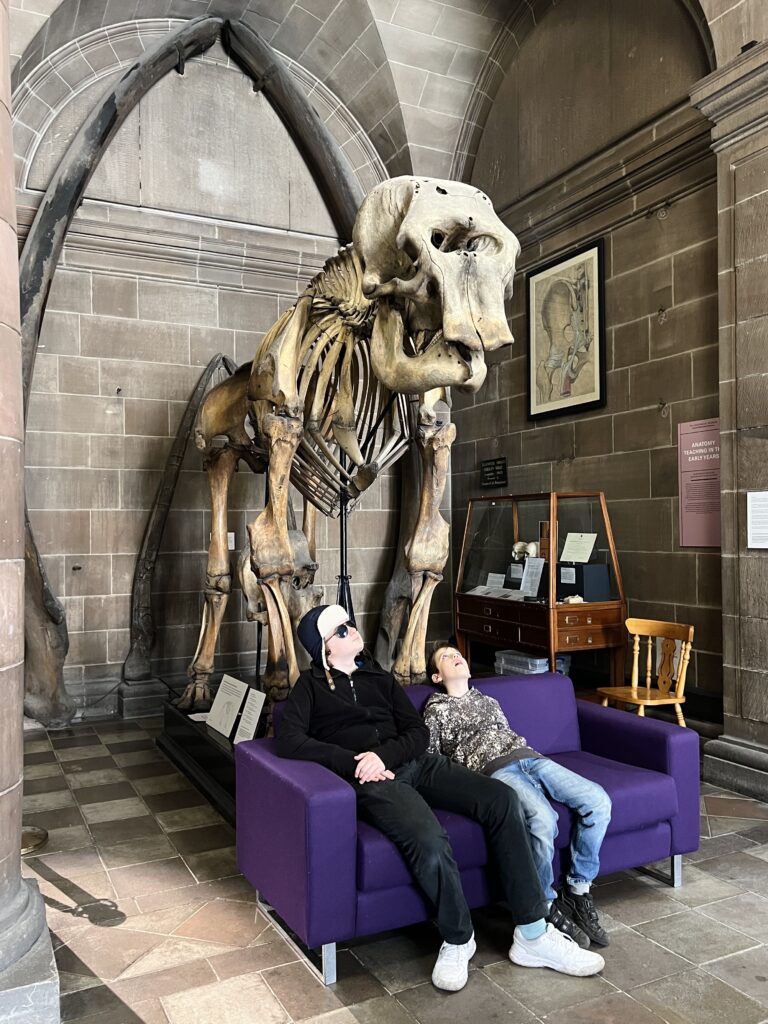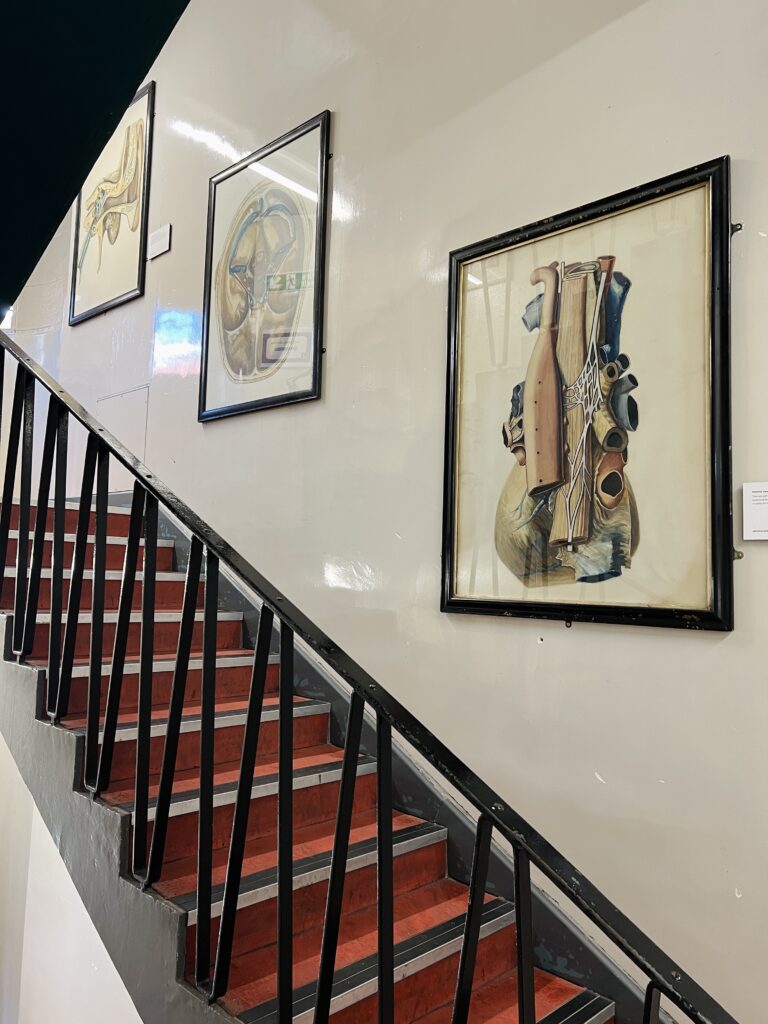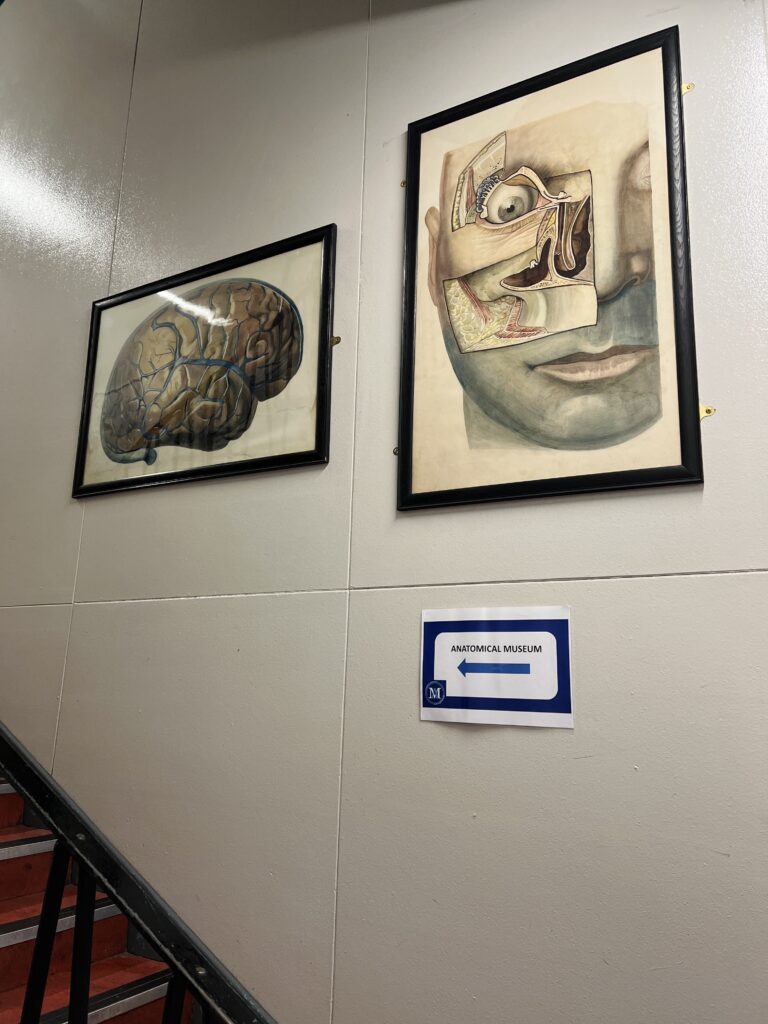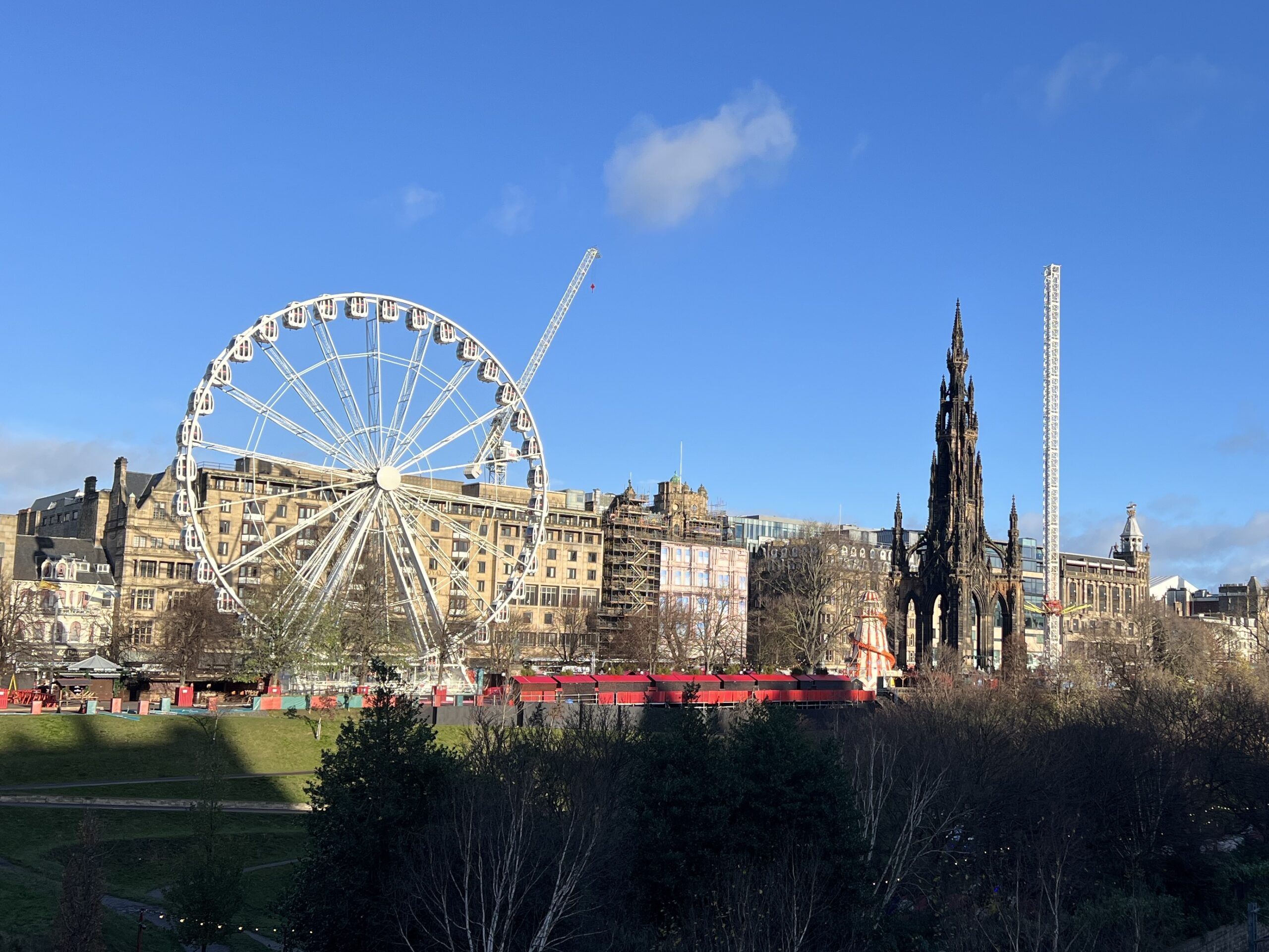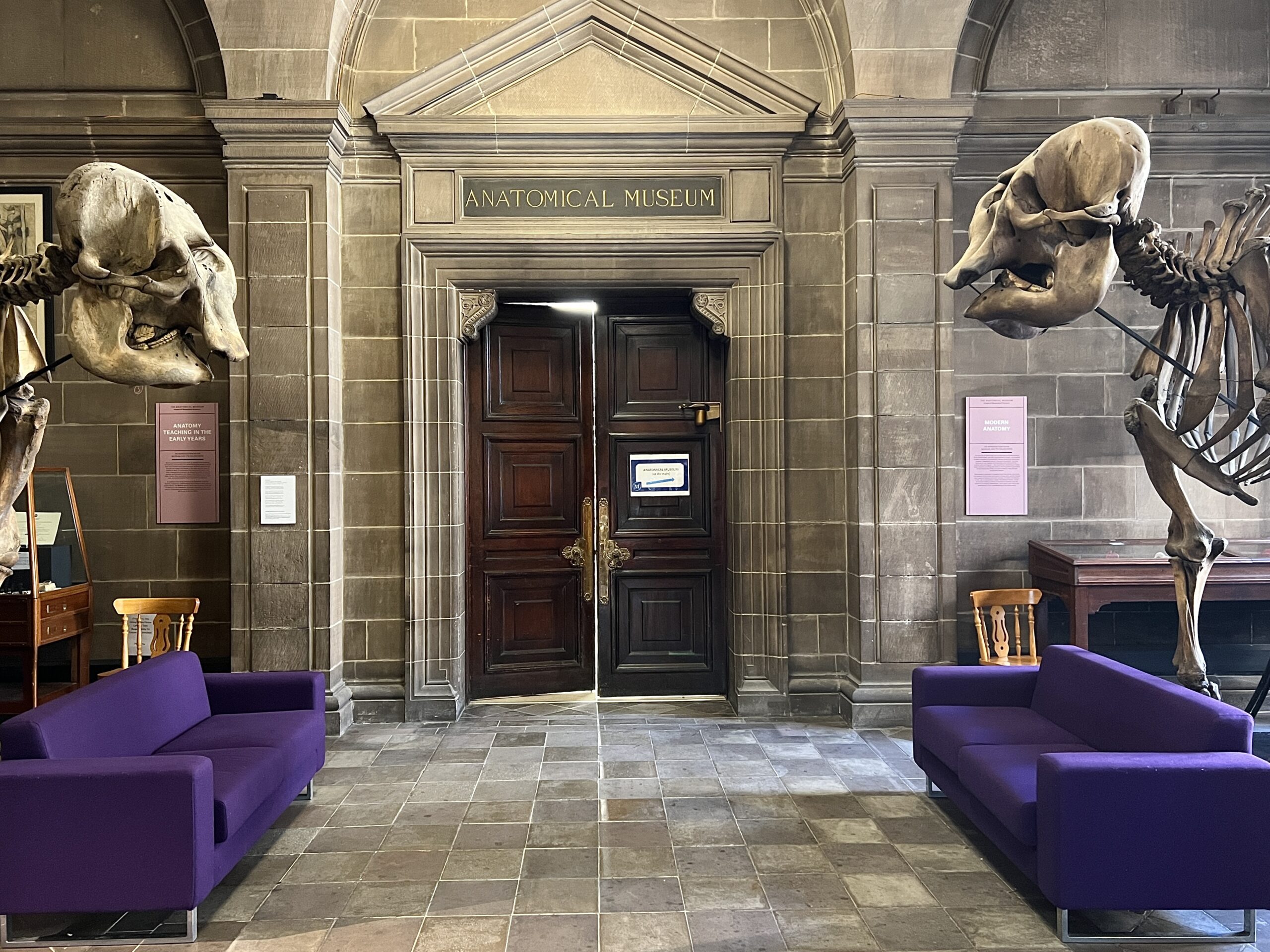
{Edinburgh} The Anatomical Museum with Kids
This past weekend, we visited Edinburgh’s Anatomical Museum. We’ve visited before, but that was almost ten years ago when youngest child was only a baby so he couldn’t remember any of it. He’s quite interested now in anatomy and how the body works, so I thought he would enjoy going again.

The Anatomical Museum’s collection consists of around 12,000 objects, which tell the story of 300 years of teaching anatomy at the University of Edinburgh. Around a third of the collection is related to pathology, anatomy and zoology, including anatomical teaching models, human and animal skeletal remains, and fluid preserved specimens (or ‘things in jars’, as my kids call them). The rest of the collection includes phrenology, pharmacology, anthropology, ethnography, forensics as well as anatomical illustrations and other artworks. Originally opened in 1884, in the 1950s the original three storey museum was reduced to a single upper floor, the site of the present museum. That’s why you will still find “Anatomical Museum” carved in to the stonework on the first floor, and in to the wrought iron entrance gates.

In the foyer on the first floor, there is a small display covering some of the history of the early years of anatomy teaching at the University of Edinburgh, alongside some whalebones and two large elephant skeletons taking pride of place, flanking the doors which lead to the main museum on the third floor. There was also a “very cool” (my kids’ words, not mine) hologram of a human body – which was impossible to photograph – with three different layers of information. If you stood to one side, you could see the body’s internal organs, in the middle the blood vessels and nervous system, and to the other side the musculature. Apparently it is the largest hologram in the UK, and the only one that displays a full-length human body!
Going up the stairs, on your way to the main museum, you can view some of the anatomical artworks from the collections, as well as a bust of William Harvey (1758-1657), an English physician who was the first to describe accurately how blood was pumped around the body by the heart.

Finally, on the third floor, you will find the museum’s main exhibition space, though I can’t show you any pictures of it. The museum has a licence to display human remains to the public. Due to the law which governs the display of human remains, strictly no photography or filming is permitted anywhere within the space. Failure to comply with these regulations means the University of Edinburgh could lose its right to retain human remains and its ability to teach anatomy. However, I can tell you a bit more about what the museum offers for children and families (please note that the photos below were taken outside of the museum, the first was taken in the stairwell and the others at home).
Firstly, there is a trail to find 10 Lego skeletons hidden around the main exhibition space. Solve the clues to find the skeletons, and write or draw in the answers. Each skeleton is also holding a letter – note down all the letters, then unscramble them to reveal the secret word. If you take your completed trail to a member of staff, you will receive a souvenir sticker to take home.
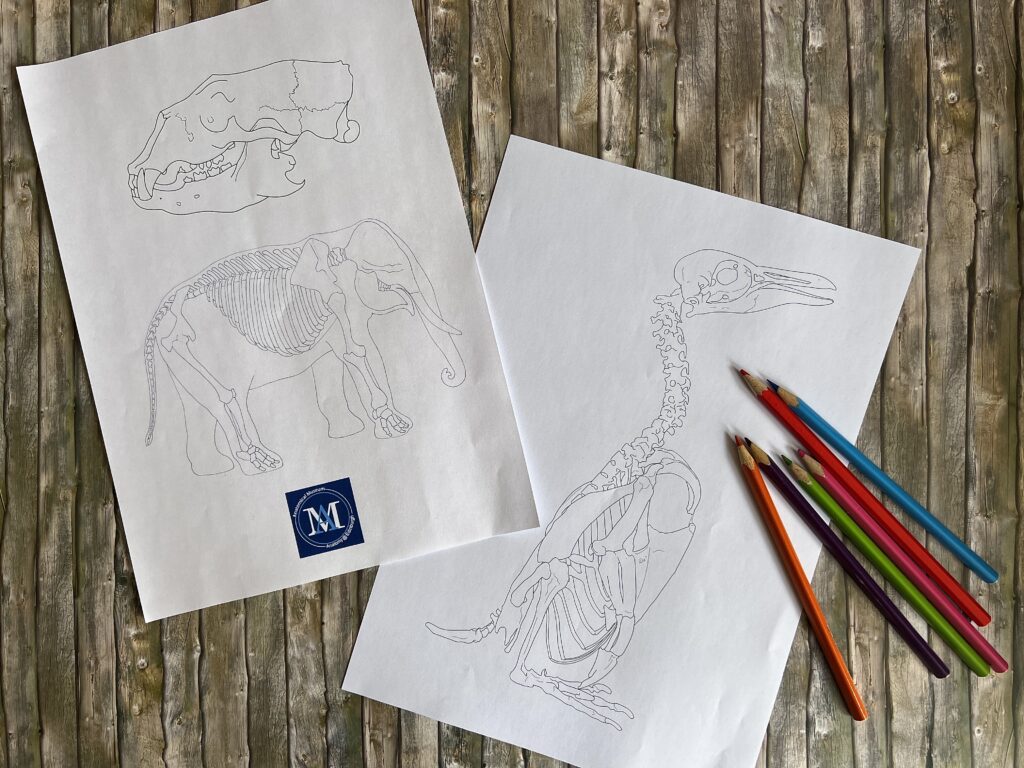
There was also a table set aside for colouring in, with two different colouring sheets to choose from – an elephant and a penguin – and a big selection of colouring pencils. We took a couple of sheets with us to finish off at home.

There was also a table with some anatomy books for kids to browse through and read. Please note that the books in the picture above are ones we have at home, and have been included for illustrative purposes. The books at the museum were “Eyewitness Visual Dictionaries: The Visual Dictionary of the Human Body” and “Primary Explorers: Human Body”.
Finally, not specifically for children but also very accessible to families, was a table with some “What am I?” cards. There were around eight cards in total, with a short description and a snippet of a picture on the front, e.g. “I am a muscle. Like music, I have a beat. I am also like a pump. What am I?” And then on the other side it would tell you the answer (“I am the heart”), and give some more information but in terms that a lay person can easily understand.
Overall, we had a very interesting time at the museum, learning about the body. The museum requests that under 16s be accompanied by an adult, and parents are asked to use their own discretion when deciding to bring younger children to the museum. Despite his interest in the subject matter, my 9 yr old was initially a bit spooked – he said there were “just too many skeletons” – but he got used to it after we’d been there a while. In comparison, when we previously visited, the boys were aged 1 and 5 and both completely unfazed by it all. So it really is up to the individual child, and you will know your child best.
Visitor Info
The Anatomical Museum is only open to the public on a limited number of days each year, usually the last Saturday of the month except over the summer months. This is because it’s part of the University of Edinburgh, and is primarily a teaching collection and in continuous use by the University’s medical students.
Admission is free, but spaces are limited so you need to book a ticket. Upcoming open day dates, and links for ticket bookings, can be found on the museum’s website. If you follow the museum on Facebook or Twitter, you’ll also get notified of dates.
There is a buggy park on the ground floor (items left at own risk), and lift access to the first and third floors.
How to Get There
Location: Doorway 3, Medical School, Teviot Place, Edinburgh, EH8 9AG
There are several buses that stop close by the museum, on Lauriston Place, Forrest Road, Bristo Place and Bristo Square, including the 2, 9, 12, 23, 27, 35, 45 and 47.





